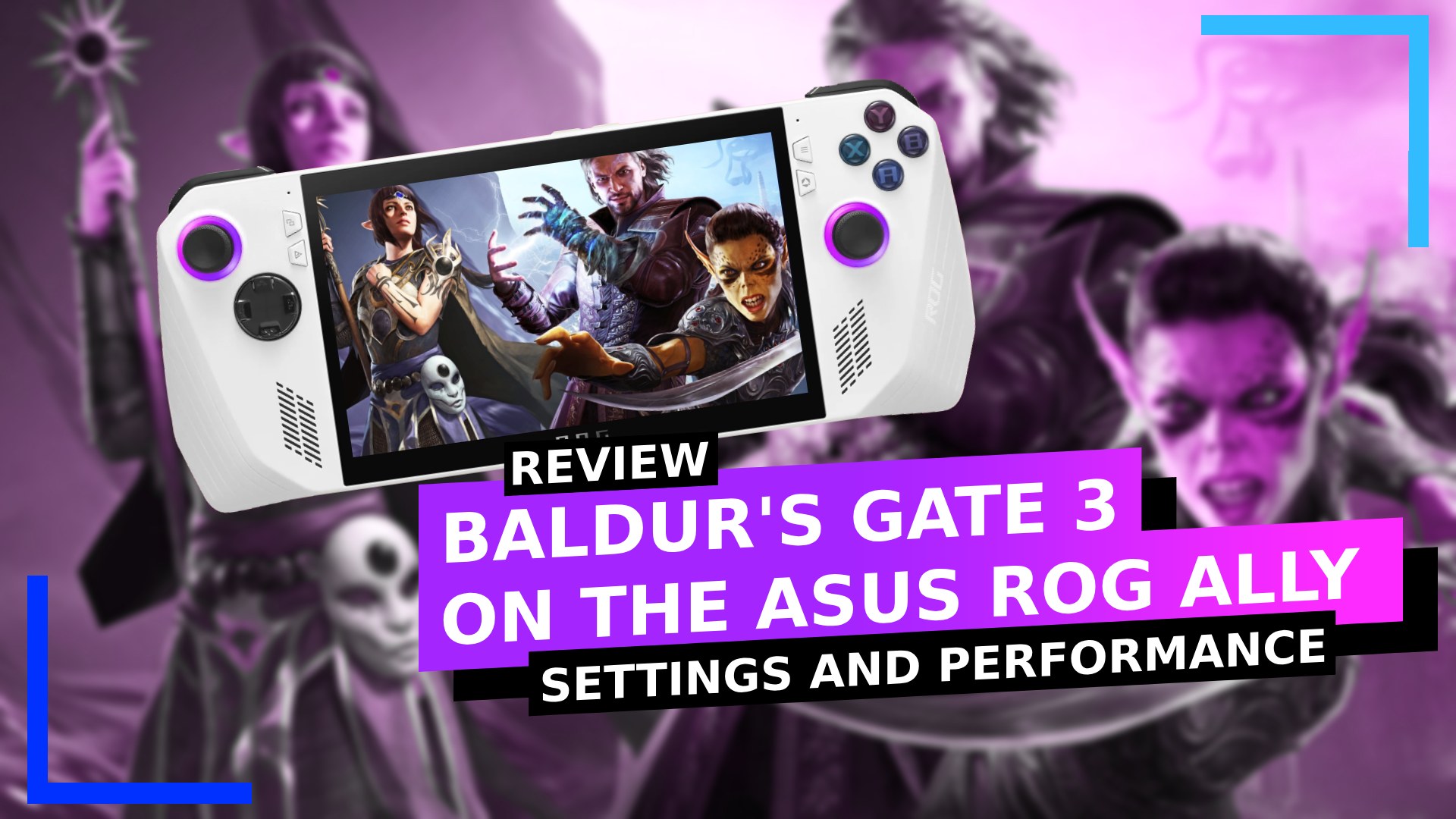Thanks to Larian Studios doing an excellent job at making Baldur’s Gate 3 playable on a range of devices, the game runs really well on the ASUS ROG Ally and can be played and enjoyed with minimal issues.
Performance.
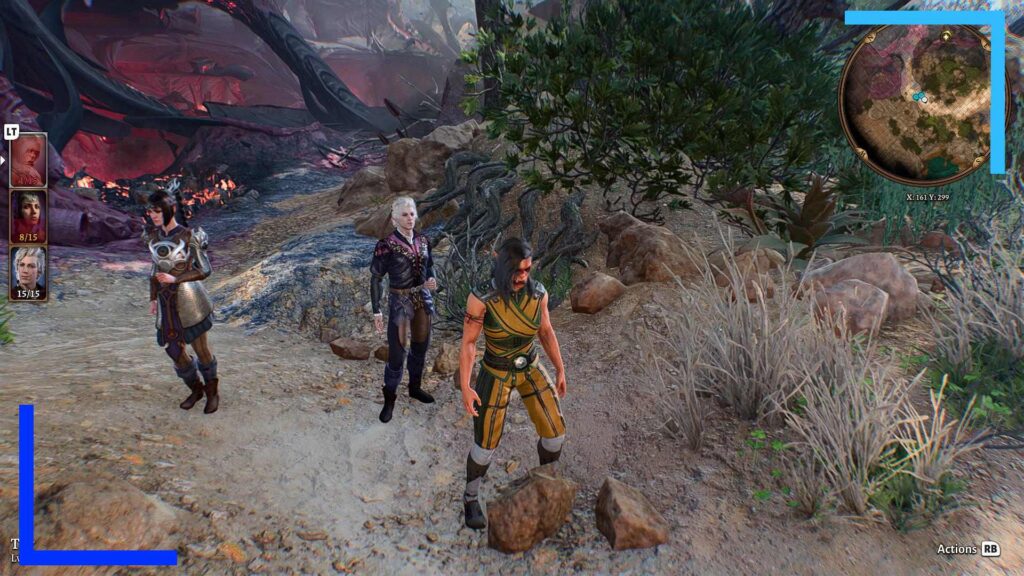
One of the main things I found with Baldur’s Gate 3 on the ROG Ally is to make sure your expectations are set before you play. I said the same thing when I tested it out on the Steam Deck. If you go in hoping for 60 frames per second, you’re going to be let down. But if you understand this is a high-end AAA game running on hardware it wasn’t originally designed for, you’ll come away happy.
So, let’s dig in. Baldur’s Gate 3 is best played as a 30 frames per second game. You can get higher at times, but the moment enemies or extra non-player characters get involved, things will dive. At its height, around 45 frames is the best it can do. At its worst, dips into the 25s will happen but the game will course-correct itself pretty quickly back to the 30s.
The opening sections aren’t the best example of how Baldur’s Gate 3 will end up either. It all starts off promising – with many areas hitting that sweet 45 frames spot. But, as I say, it doesn’t last.
Going back to my Steam Deck review for a second, the low and often shakey framerate really isn’t an issue. Or it’s not as bad as it sounds, anyway. Baldur’s Gate 3 has been designed with lesser-powered systems in mind, so when the 30s and lower do kick in it’s not massively felt compared to other games. It’s also one of the few games where I could legit recommend playing at 25 frames per second it’s that smooth.

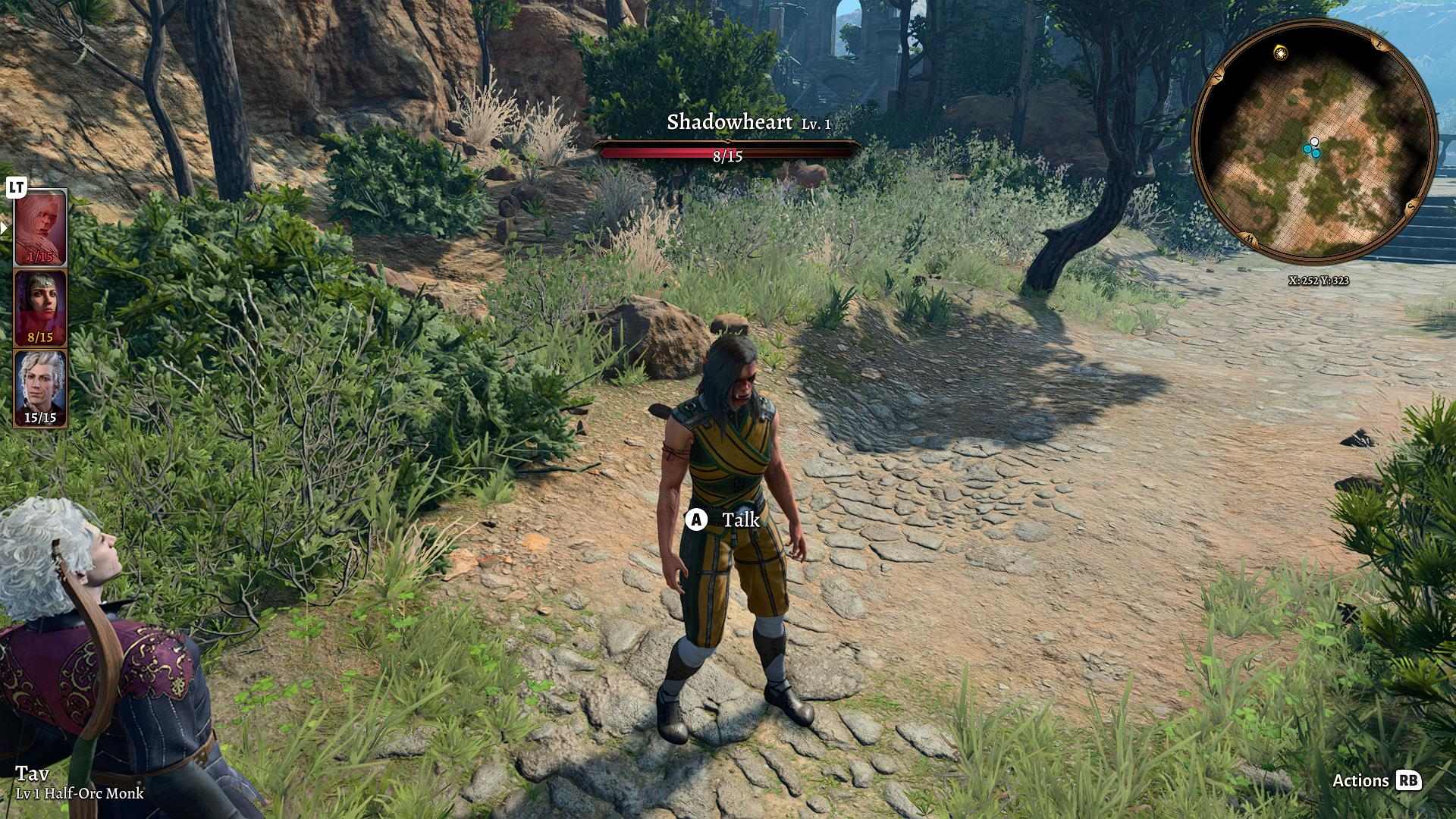
Pictured: Left shows FSR set to Ultra Quality, while the right shows FSR in Performance mode. Credit: RetroResolve.
I don’t, however, recommend playing it in docked mode. I’m yet to find the cause of it but whenever I dock Baldur’s Gate 3 without the XG Mobile attached edges become more jittery. Playing in handheld mode fixes this thanks to Temporal anti-aliasing integration, and my 4090 XG Mobile is more than capable of fixing the problem without breaking a sweat, but without the big XG it’s not fun when connected to a monitor.
Still, for most that isn’t going to be an issue. As the ROG Ally is a handheld, that’s how most will be playing Baldur’s Gate 3.
Visually, despite the need for lower graphical settings, everything still looks great. Textures, skin types, and detailed clothing all still look great. Losing God Rays neuters the lighting slightly, but not enough to be considered a negative. It’s like comparing silver with gold – both have value, it’s just one’s objectively worth more than the other. But if you were walking the dog and found yourself tripping over a free block of silver, you’re still going to be happy, right? That’s how the visuals are. They’re still great, regardless.
One of the advantages of playing on the ASUS ROG Ally over other handhelds – especially the Steam Deck – is the extra power bump. This small difference is what lets the ROG Ally play Baldur’s Gate 3 at 1080p rather than 800p or 720p. As someone who’s played the game on both consoles, there’s definitely a noticeable difference in sharpness and clarity on the Ally. It pops wonderfully.
Recommended Settings for Smooth Gameplay.
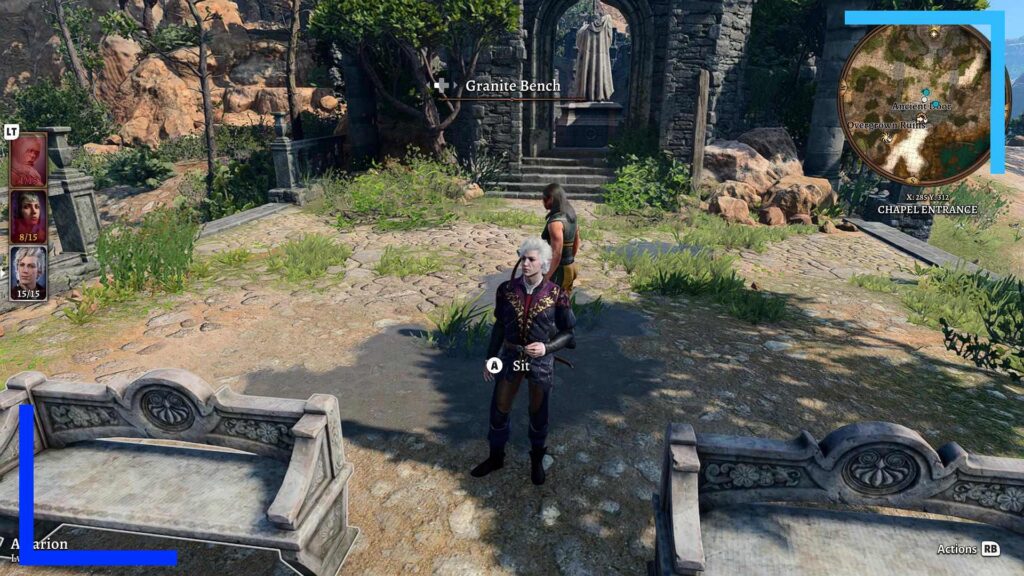
The goal of my settings are to create a patchwork you can use from the start of the game all the way to the end with minimal issues. Drops are currently unavoidable despite what people say online, but there is a way to minimize them so they don’t get in the way.
First things first, I prefer the look of running Baldur’s Gate 3 in a crisp 1080p. You can drop that down to 720p to save battery and gain around seven frames per second, but the drop in visuals isn’t enough to justify it. Personally, I’d keep 720p for the areas where the game struggles more (mostly found in Act 2 and Act 3).
Likewise, feel free to switch triple buffering over to double if you need a few extra frames. I also strongly recommend running with AMD FSR set to Ultra Quality. This, for me, was the difference between sub-30 and above. At launch it was recommended to keep this off, but since we’ve had a few updates, it’s now safe to turn it back on until FSR 2.0 arrives around September 6.
| Baldur’s Gate 3 (In-game Settings) | |
| Aspect Ratio | 16:9 |
| Resolution | 1920×1080 |
| Display Mode | Fullscreen |
| Vsync | Triple Buffering |
| Frame Rate Cap | On |
| Maximum Frame Rate | 60 |
| General | |
| Model Quality | Medium |
| Detail Distance | Low |
| Instance Distance | Low |
| Texture Quality | Medium |
| Texture Filtering | Anisotropic x4 |
| Animation Level of Detail | Medium |
| Slow HDD Mode | Off |
| Dynamic Crowds | Off |
| Lighting | |
| Shadow Quality | Low |
| Cloud Quality | Low |
| Fog Quality | Low |
| Post Process | |
| AMD FSR 1.0 | Ultra Quality |
| Fidelity FX Sharpening | Off |
| Anti-Aliasing | TAA |
| Ambient Occlusion | On |
| Depth of Field | None |
| God Rays | Off |
| Bloom | Off |
| Subsurface Scattering | Off |
| ASUS ROG Ally Settings | |
| Profile: Turbo 25w | Estimated Battery Life: 1 Hour 36 Minutes |
| Docked Mode Resolution: 1920×1080 | Refresh Rate: 60 Hz |
| RAM Usage: 22% | CPU Usage: 43% |
| GPU Usage: 70% | GPU Temperature: 70 to 90 degrees |
| Performance Rating: 3/5 | |
SMAA for the anti-aliasing solution also frees up a bit of power for elsewhere, but the end result is jagged edges. TAA, meanwhile, helps to smooth those edges out, which in turn really helps Baldur’s Gate 3 shine on the ROG Ally. Even more so if you’ve decided to go with 1080p for the resolution.
One thing to keep in mind: When it docked mode, I ended up pulling fairly alarming GPU temperatures in the 90s. That’s far too hot for my liking, and given the ROG Ally does have a problem with frying the SD card slot, I’d definitely recommend sticking to handheld mode where temps are a more acceptable 70 degrees. If you do find your system getting too hot, exit the game, head into Armoury Crate, and set up a custom fan profile that’s more aggressive to offset the extra heat.
During my testing of other games on the Ally, 60 to 75 degrees are the average temperature I’ve been pulling. If it’s higher than that, make sure it’s well-ventilated or, as mentioned, set up a custom fan curve.
Bugs and Issues.
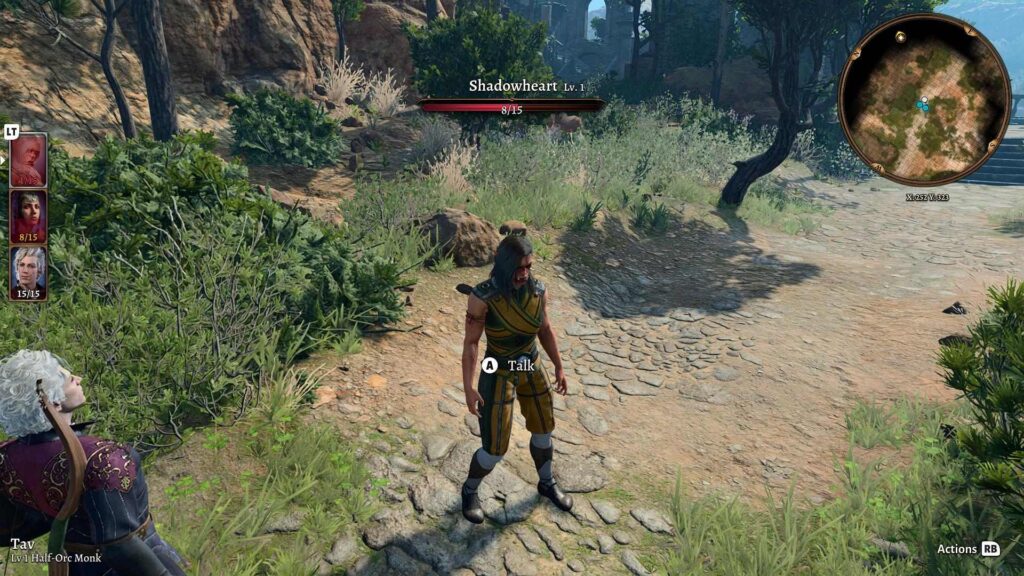
Expect occasional crashes, T-posing characters, and a few reloads to fix bugs. Honestly, it’s nothing major. For the most part Baldur’s Gate 3 runs without problems, and when they do happen, they’re far enough between that it’s not a major annoyance.
Verdict.
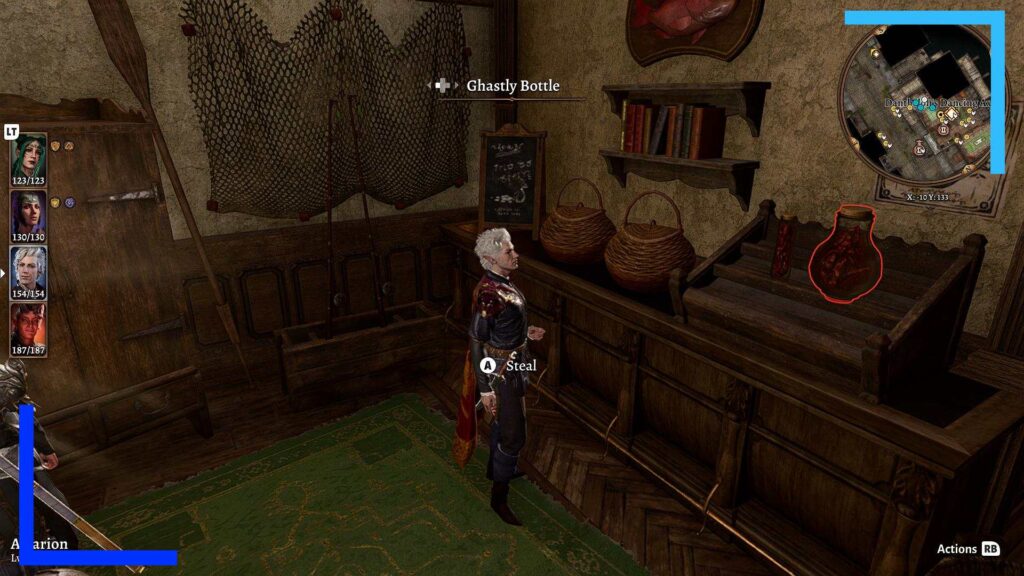
Baldur’s Gate 3 is one of the best RPGs I’ve played this year. The level of choice (and constant second-guessing) is unrivaled. The combat takes time to get into, as do the controller controls. But when everything comes together, there really is nothing else like Baldur’s Gate 3. It’s a AAA single-player game that finally delivers.
Performance on the ASUS ROG Ally is rock solid for the most part. There are issues and minor irritants, but nothing ever becomes so bad that it’s a problem. Plus as this is a Windows device, you’re free to mod without worrying about whether they’ll be compatible. It’s a win/win.
If you’re after something that captivates to the point of lingering in the psyche, and you love RPGs, you absolutely need to check out Baldur’s Gate 3.

All screenshots captured on ASUS ROG Ally Hardware. | Review code provided by Sandbox Strategies on behalf of Larian. To learn more about our review policy click here. | Alternatively, click here to find out why you can trust me.

